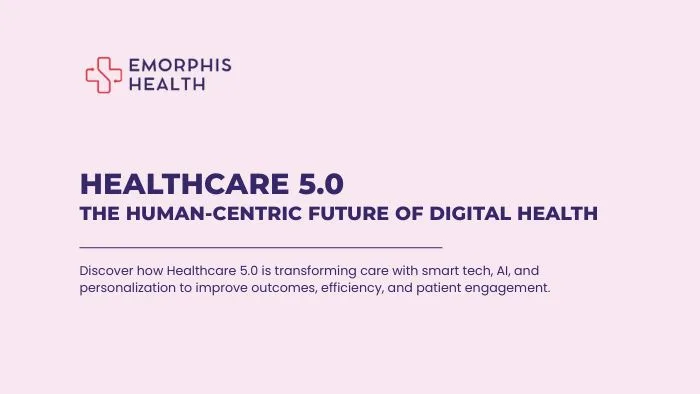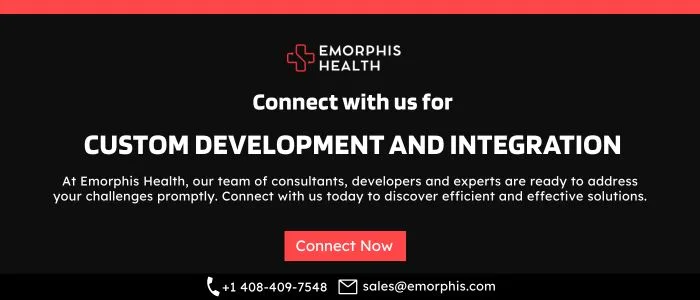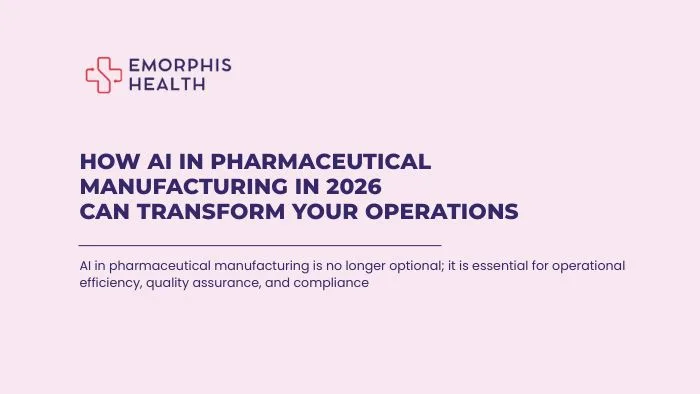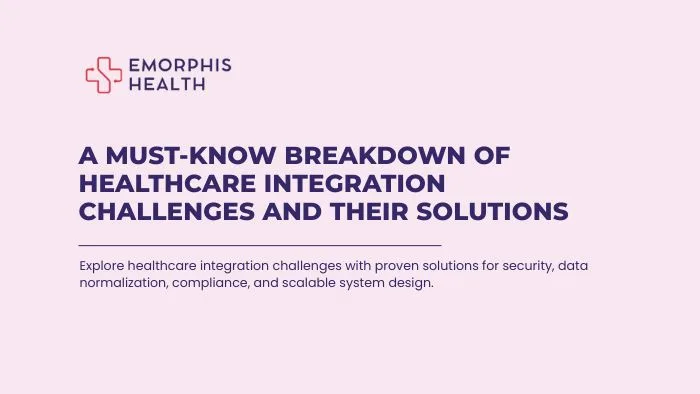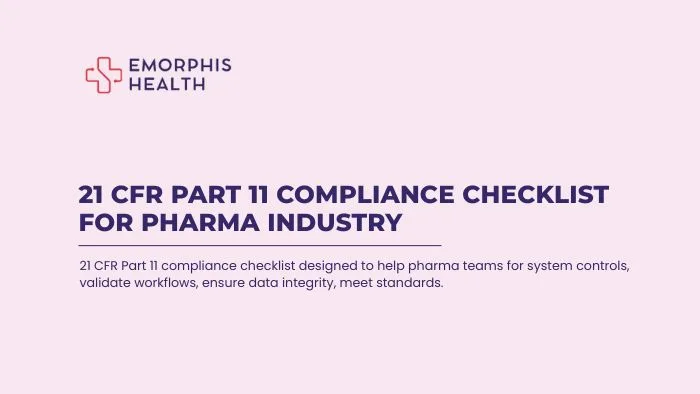Introduction to Healthcare 5.0
See Contents
- 1 Introduction to Healthcare 5.0
- 2 Core Principles of Healthcare 5.0
- 3 Key Technologies Powering Healthcare 5.0
- 4 Healthcare 5.0 vs Previous Healthcare Paradigms
- 5 How Healthcare 5.0 Redefines Care Delivery
- 6 Use Cases and Applications of Healthcare 5.0
- 7 How to Get Started with Healthcare 5.0: Step-by-Step Guide
- 8 Future Outlook of Healthcare 5.0
- 9 Conclusion
What Is Healthcare 5.0?
The healthcare industry is entering a new era known as Healthcare 5.0. This phase builds upon previous healthcare models but makes a major shift by integrating intelligent technologies, automation, and data-driven systems that place people at the center of care.
Healthcare 5.0 goes beyond just using digital tools. It focuses on building smart, connected, and human-centric healthcare ecosystems. These systems aim to improve patient outcomes, increase provider efficiency, and reduce overall costs.
Hence, Healthcare 5.0 is a new way of improving healthcare by using smart technology to make care more personal, faster, and better. It helps doctors make quicker decisions, keeps patients more involved in their health, and focuses on preventing problems before they start.
A Look Back: The Evolution of Healthcare Models
Before Healthcare 5.0, there were four major phases:
- Healthcare 1.0 – Centered on basic clinical care and reactive treatment.
- Healthcare 2.0 – Introduced standardization in processes and services.
- Healthcare 3.0 – Brought in digitization through EHRs and digital systems.
- Healthcare 4.0 – Focused on smart automation, IoT, and data-driven workflows.
Each of these stages laid the groundwork for a more advanced, intelligent model.
What Makes Healthcare 5.0 Different?
Healthcare 5.0 integrates technologies such as:
- Artificial Intelligence (AI)
- Internet of Things (IoT)
- Blockchain
- Robotics
- 5G Connectivity
These technologies are used together to build systems that are not only fast and efficient but also personalized, predictive, and compassionate.
From Reactive to Proactive Healthcare
With Healthcare 5.0, the focus shifts from reacting to illness to preventing it. Instead of waiting for symptoms to appear, care becomes predictive and personalized.
Patients are no longer passive recipients of care. They become active participants in managing their health, supported by real-time insights and data from AI and connected devices.
Why Invest in Healthcare 5.0 Now?
If you are a hospital administrator, clinic owner, or healthcare provider, now is the time to begin your digital transformation. The benefits include:
- Faster diagnostics
- Better treatment outcomes
- Enhanced patient engagement
- Lower operational costs
Organizations that adopt Healthcare 5.0 early will lead the future of medicine.
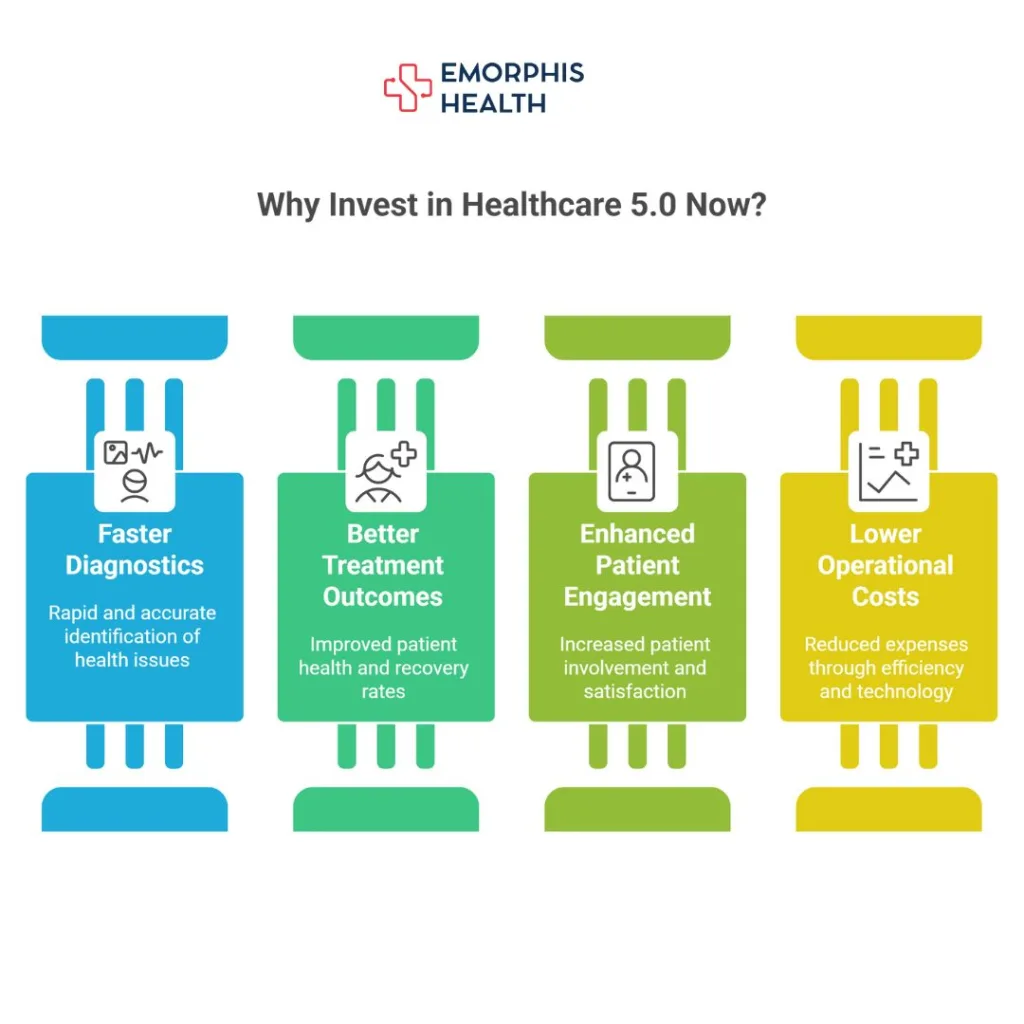

Core Principles of Healthcare 5.0
Healthcare 5.0 is shaped by a set of principles that guide its design, implementation, and long-term impact. These principles reflect a deep shift from technology-first models to approaches where human needs and ethical care take priority. At its core, Healthcare 5.0 is about enhancing the quality of life through the thoughtful use of intelligent technologies.
1. Human-Centric Care
The most important principle of Healthcare 5.0 is that it puts people first. This means care systems are built around the needs of patients, not just the workflows of institutions. The goal is to create personalized care experiences by understanding individual preferences, health history, and lifestyle. Providers who want to offer more patient-friendly experiences can now build remote care platforms and design personalized healthcare journeys using smart tools.
2. Predictive and Preventive Medicine
Instead of waiting for illness to occur, Healthcare 5.0 focuses on early detection and prevention. AI algorithms analyze health trends and risk factors to warn patients and doctors about potential problems. When hospitals choose to implement AI-powered patient care systems, they enable early intervention that reduces emergency visits and long-term complications.
3. Seamless Technology Integration
In a Healthcare 5.0 environment, technology is fully integrated into healthcare operations. From smart hospital beds that monitor vital signs to wearable health devices that track heart rate and sleep quality, data flows across systems in real time. Healthcare providers can modernize hospital infrastructure by deploying connected health solutions that communicate effortlessly across departments and devices.
4. Data-Driven Decision Making
Every patient interaction generates data. Healthcare 5.0 systems use this data to support clinical decisions, optimize treatment plans, and improve population health outcomes. AI-driven clinical decision support tools help doctors make faster, more accurate diagnoses. Organizations looking to transform patient care with AI should invest in secure data systems that enable safe and reliable decision-making.
5. Personalization at Scale
No two patients are the same. Healthcare 5.0 enables personalized treatment plans using technologies such as genomics, AI, and digital twins. Patients receive treatments that are tailored to their biology and health profile. Startups and enterprises can now develop personalized medicine platforms that deliver better outcomes at scale.
6. Ethical and Sustainable Innovation
Healthcare 5.0 is committed to ethical technology use. Patient data privacy, consent, and transparency are treated as priorities, not afterthoughts. Blockchain can be used to secure health data management and ensure trust in digital transactions. Companies that want to offer secure healthcare technology consulting should focus on building solutions that align with privacy regulations and ethical standards.


These core principles show that Healthcare 5.0 is more than a technology upgrade. It is a complete redesign of healthcare delivery with a focus on empathy, safety, and long-term value.
In the next part, we will explore the technologies that power Healthcare 5.0 and how they work together to support intelligent, responsive, and scalable healthcare systems.
Key Technologies Powering Healthcare 5.0
The foundation of Healthcare 5.0 is built on a set of advanced technologies that work together to deliver smart, efficient, and personalized care. These technologies are not just add-ons to existing systems. They are deeply embedded into the core of healthcare operations, enabling faster decision-making, better patient engagement, and scalable care delivery.
1. Artificial Intelligence (AI)
AI is at the heart of Healthcare 5.0. It helps in diagnosing diseases, recommending treatments, and predicting health outcomes. Machine learning algorithms can analyze thousands of medical records, lab reports, and imaging results within seconds. Healthcare organizations looking to improve clinical outcomes can now implement AI-powered diagnostics that increase speed and accuracy.
Companies that want to transform patient care with AI can develop intelligent clinical decision support systems. These tools reduce the burden on doctors and help standardize best practices across healthcare facilities.
Explore more with AI in Healthcare.
2. Internet of Things (IoT) and Wearables
IoT in healthcare connects devices such as smart monitors, wearable health trackers, and implantable sensors. These devices gather real-time data on heart rate, blood pressure, oxygen levels, and more. Remote patient monitoring solutions powered by IoT help reduce hospital visits and support long-term care.
Hospitals can deploy wearable health devices to monitor patients outside the clinical setting. Providers aiming to build intelligent healthcare tools should include IoT integration as a core part of their digital transformation strategy.
3. 5G and High-Speed Connectivity
Healthcare 5.0 requires fast, stable, and secure connectivity. 5G technology supports real-time data sharing, remote surgeries, and virtual consultations with minimal delay. When you develop smart hospital systems or expand telemedicine services, 5G is essential for seamless communication between doctors, patients, and devices.
Organizations that plan to expand virtual healthcare operations should invest in 5G-ready infrastructure to support high-bandwidth digital health services.
4. Robotics and Automation
Robotics plays a key role in Healthcare 5.0. Surgical robots assist doctors in complex procedures with high precision. Service robots handle administrative tasks, medication delivery, and disinfection. Robotics also supports elderly care by providing mobility and personal assistance.
Healthcare providers who want to automate hospital workflows can now buy intelligent healthcare tools that combine robotics with AI to improve operational efficiency and safety.
5. Blockchain Technology
Blockchain offers secure and tamper-proof storage of health records. It ensures that only authorized individuals can access sensitive medical data. Patients can control how their information is shared, improving trust and compliance.
Startups and enterprises can implement blockchain healthcare solutions to support secure data exchange, patient consent management, and transparency in clinical trials.
6. Augmented Reality (AR) and Virtual Reality (VR)
AR and VR are transforming how medical professionals learn, plan, and perform procedures. Surgeons use AR for image-guided operations, and students use VR for interactive medical training. VR is also used in mental health therapy and patient education.
If your organization plans to develop healthcare training platforms, AR and VR can enhance learning outcomes and simulate real-world clinical experiences.
7. Digital Twins
A digital twin is a virtual model of a physical body, organ, or system. In healthcare, digital twins simulate a patient’s health condition, allowing providers to test treatment plans in a virtual environment before applying them in real life. This reduces risk and supports personalized medicine.
Businesses that want to invest in next-generation healthcare platforms should consider building digital twin technology into their precision medicine development strategies.
8. Cloud and Edge Computing
Cloud computing supports scalable data storage and remote access, while edge computing allows real-time processing near the data source. Together, they ensure fast response times and efficient use of resources. Hospitals and clinics can modernize their systems by adopting cloud-based healthcare platforms that ensure smooth performance under heavy data loads.
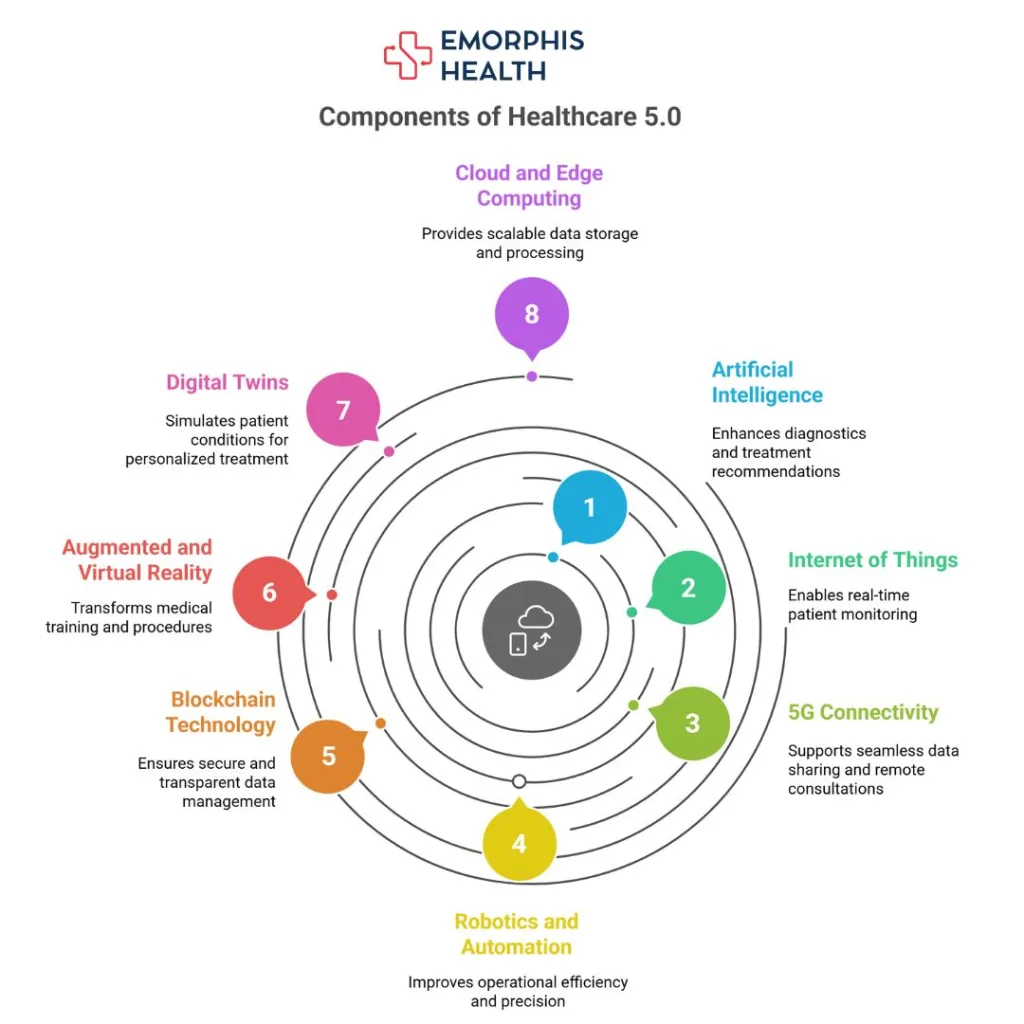

By integrating these technologies, Healthcare 5.0 becomes more than a vision—it becomes a working model for smarter, safer, and more personalized health services.
In the next part, we will compare Healthcare 5.0 with earlier healthcare models and highlight how it redefines the patient and provider experience.
Healthcare 5.0 vs Previous Healthcare Paradigms
To fully understand the value of Healthcare 5.0, it helps to look at how healthcare has evolved over time. Each stage of development brought specific improvements, but also limitations. Healthcare 5.0 combines the best of previous models with new technologies and a patient-first mindset to deliver intelligent, personalized, and accessible care.
Evolution from Healthcare 1.0 to Healthcare 5.0
| Healthcare Version | Focus | Key Features |
|---|---|---|
| Healthcare 1.0 | Basic Treatment | Manual records, in-person care, doctor-centered decisions |
| Healthcare 2.0 | Standardization | Protocol-based treatment, basic infrastructure |
| Healthcare 3.0 | Digitization | Electronic Health Records (EHRs), basic automation |
| Healthcare 4.0 | Smart Technology Integration | AI, IoT, remote care tools |
| Healthcare 5.0 | Human-Centric Smart Healthcare | Personalized, predictive, ethical, and tech-enabled care |
While Healthcare 3.0 brought digital records and remote consultations, it often lacked personalization. Healthcare 4.0 introduced intelligent automation, but the systems were more focused on operational efficiency than user experience.
Healthcare 5.0 is different. It places patients at the center and aligns technology with human needs. It uses AI to understand individual health profiles, IoT to track real-time vitals, and blockchain to ensure data privacy. This human-centered approach leads to better engagement, satisfaction, and outcomes.
How Healthcare 5.0 Redefines Care Delivery
1. From Reactive to Proactive Care
Earlier healthcare models were reactive. Patients visited doctors after symptoms appeared. In contrast, Healthcare 5.0 emphasizes early detection, using predictive algorithms and remote monitoring tools. Organizations can now develop remote patient monitoring solutions to prevent complications and reduce emergency room visits.
2. From Generic to Personalized Treatment
Healthcare 5.0 uses data and genomics to personalize care. Instead of using one-size-fits-all treatment plans, doctors can tailor therapy based on a patient’s unique profile. Startups working on precision medicine development can build intelligent healthcare platforms that deliver highly personalized recommendations.
3. From Isolated to Connected Systems
Healthcare 5.0 promotes system-wide connectivity. Devices, departments, and data systems communicate seamlessly. Hospitals can modernize their infrastructure by adopting cloud-based healthcare platforms that ensure smooth data flow and coordination.
4. From Limited to Scalable Access
In earlier models, healthcare access was limited by location and resources. Healthcare 5.0 overcomes this with mobile health apps, telemedicine, and AI-driven virtual assistants. Providers can now offer intelligent telehealth platforms to reach rural and underserved communities.
5. From Data Collection to Actionable Intelligence
Previous models collected data but often failed to act on it in real time. Healthcare 5.0 integrates AI to convert raw data into insights that guide medical decisions. Organizations looking to transform patient care with AI should focus on building systems that support actionable intelligence at the point of care.
By understanding how Healthcare 5.0 improves upon earlier models, decision-makers in healthcare can clearly see the value of adopting advanced, patient-centered systems. The shift is not just technological but philosophical. It is about caring for people more intelligently, more ethically, and more efficiently.
In the next part, we will explore real-world use cases and applications of Healthcare 5.0 across different settings and patient needs.
Use Cases and Applications of Healthcare 5.0
Healthcare 5.0 is already shaping real-world solutions across hospitals, clinics, research labs, and homes. Its human-centric design, combined with intelligent technologies, allows for more efficient workflows, better patient engagement, and scalable systems. Below are some of the most impactful use cases that highlight the practical applications of Healthcare 5.0.
1. Smart Hospitals
Smart hospitals represent the infrastructure backbone of Healthcare 5.0. These hospitals use AI, robotics, and IoT to streamline operations and improve patient outcomes. For example, AI systems can manage patient flow, while smart sensors monitor patients’ vitals in real time. Automated service robots can deliver medications, sanitize rooms, and assist with logistics.
Hospitals planning to improve operational efficiency should invest in developing smart hospital systems that integrate patient monitoring, diagnostics, and treatment planning into a single platform.
2. AI-Powered Diagnostic Systems
Healthcare 5.0 brings speed and accuracy to diagnostics. AI models analyze medical images, blood reports, and patient histories to detect diseases such as cancer, diabetes, and neurological conditions. These systems assist doctors by highlighting areas of concern and reducing diagnostic errors.
If you aim to offer advanced diagnostic services, you can implement AI-powered diagnostics to support early detection and improve patient trust in your clinical services.
3. Personalized Medicine
With access to genetic data and AI tools, Healthcare 5.0 enables personalized treatment plans that consider a person’s DNA, environment, and medical history. This leads to better responses to therapy and fewer side effects.
Biotech firms and healthcare startups can develop precision medicine platforms that analyze genomic data and suggest individualized treatments, helping to position themselves at the forefront of the next-generation healthcare platforms.
4. Remote Patient Monitoring and Virtual Care
One of the most widely adopted applications of Healthcare 5.0 is remote care. Wearable devices and IoT sensors collect patient data outside of the hospital and send it to healthcare providers in real time. This reduces hospital readmissions and supports chronic disease management.
Organizations looking to reduce care delivery costs can build remote care platforms equipped with real-time health analytics and personalized alerts.
5. Elderly and Assisted Living Support
Aging populations require continuous support, often with limited caregiver availability. Healthcare 5.0 solutions like AI-based monitoring systems, fall detection devices, and robotic assistants help elderly individuals maintain independence while staying safe.
Companies can buy intelligent healthcare tools specifically designed for assisted living facilities, allowing staff to deliver high-quality care without being overwhelmed.
6. Virtual Healthcare Assistants
Virtual assistants powered by AI can answer patient queries, remind them about medications, schedule appointments, and provide mental health support. These tools are especially useful in primary care, mental health services, and chronic condition management.
Providers who want to improve patient engagement can implement virtual healthcare assistants into mobile apps or websites to offer 24/7 support.
7. AR and VR in Training and Therapy
Augmented and virtual reality tools are used in medical training simulations, surgical planning, and mental health therapy. Medical students use VR to explore 3D models of human anatomy, while surgeons practice procedures in virtual environments.
Healthcare institutions that wish to enhance training outcomes can develop healthcare training platforms powered by AR and VR to upskill staff in a safer and more immersive way.
8. Blockchain for Secure Health Data Sharing
Secure data exchange is a core need in Healthcare 5.0. Blockchain technology allows health records to be shared securely among hospitals, labs, insurers, and patients. It also provides transparent consent management.
Firms that want to offer trustworthy digital services can implement blockchain healthcare solutions to enhance data security, improve compliance, and build patient trust.
9. Digital Twins for Precision Simulation
Digital twin in healthcare allows doctors to simulate how a patient’s body will react to specific treatments. This reduces trial-and-error approaches and helps choose the most effective care path. In drug development and surgery planning, digital twins offer enormous value.
Pharmaceutical companies and research organizations can invest in digital twin-based modeling systems to test treatments virtually before clinical use.
10. Healthcare Supply Chain Optimization
AI and IoT are used to manage inventory, predict shortages, and automate ordering processes. Smart systems reduce waste, avoid stockouts, and maintain essential supplies during emergencies.
Hospitals can modernize their operations by adopting intelligent healthcare platforms that connect supply chain systems with real-time data dashboards.
These real-world applications prove that Healthcare 5.0 is not a distant future but a present-day opportunity. Whether you are a hospital administrator, a healthcare startup, or a digital health investor, building solutions based on Healthcare 5.0 principles will ensure your organization stays relevant, efficient, and impactful.
Let’s look at some of the list of apps.
Type of Applications
| Application Area | Application Name or Type |
|---|---|
| Smart Hospitals | Smart Bed and IoT Ward Management System |
| AI-Driven Patient Flow Optimization Software | |
| Hospital Resource Prediction and Allocation Engine | |
| Centralized Command and Control Dashboard | |
| Emergency Response Automation Platform | |
| AI-Powered Diagnostic Systems | AI Radiology Image Analysis Platform |
| AI Pathology Reporting Tool | |
| Predictive Disease Screening System | |
| Clinical Decision Support System (CDSS) | |
| Symptom Checker and Diagnostic Bot | |
| Personalized Medicine | Genomic-Based Drug Matching Platform |
| AI-Driven Lifestyle Personalization App | |
| Predictive Health Risk Assessment Engine | |
| Patient-Specific Medication Planner | |
| DNA-Based Cancer Treatment Optimizer | |
| Remote Patient Monitoring | IoT-Based Chronic Condition Monitoring System |
| Home-Based Remote Care Dashboard | |
| Wearable Data Aggregation and Analytics Suite | |
| Real-Time Vital Sign Monitoring App | |
| Post-Surgery Recovery Monitoring Platform | |
| Elderly and Assisted Living Support | AI Fall Detection and Emergency Alert System |
| Robotic Elderly Care Assistant | |
| Voice-Guided Health Companion for Seniors | |
| Daily Routine Scheduler for Assisted Living | |
| Smart Medication Dispenser with Alerts | |
| Virtual Healthcare Assistants | Conversational AI for Appointment Scheduling |
| AI Mental Health Chat Companion | |
| Multilingual Symptom Assessment Bot | |
| Voice Bot for Post-Discharge Care Instructions | |
| Automated Virtual Nurse for 24×7 Support | |
| AR/VR in Training and Therapy | VR-Based Surgical Simulation Suite |
| AR Anatomy Learning Tool for Medical Students | |
| Immersive VR Pain Therapy Program | |
| VR Cognitive Behavioral Therapy Platform | |
| Mixed Reality Emergency Response Training App | |
| Blockchain for Health Data Sharing | Blockchain-Based Patient Data Vault |
| Distributed Health Information Exchange System | |
| Smart Consent and Audit Trail Manager | |
| Decentralized Clinical Trial Management System | |
| Immutable Vaccine Passport Platform | |
| Digital Twins | Organ Digital Twin for Surgery Planning |
| Patient Health Twin for Chronic Disease Modeling | |
| Real-Time ICU Digital Twin Dashboard | |
| Drug Response Simulation Using Digital Twins | |
| Personalized Care Pathway Testing Engine | |
| Supply Chain Optimization | AI-Based Inventory Management Software |
| Real-Time Drug Shortage Prediction System | |
| Smart Supplier Contract Management Platform | |
| Automated Procurement and Delivery Tracker | |
| Warehouse Robotics Integration System |
In the next part, we will explore the steps involved in adopting Healthcare 5.0 across clinical, operational, and patient-facing environments.
How to Get Started with Healthcare 5.0: Step-by-Step Guide
Step 1: Evaluate Your Current Digital Infrastructure
Review your existing healthcare systems, EHRs, devices, and workflows. Understand where gaps exist and identify pain points in patient care or operations.
Step 2: Define Your Healthcare 5.0 Vision
Set clear objectives for implementing Healthcare 5.0. Decide if your goals include improving patient outcomes, reducing operational costs, enhancing care personalization, or enabling remote care.
Step 3: Select High-Impact Use Cases
Start with a few strategic projects such as remote patient monitoring, AI-based diagnostics, or hospital automation. Choose areas where digital transformation can show quick results.
Step 4: Build an Interoperable and Connected Ecosystem
Ensure your systems and devices can communicate seamlessly. Use healthcare data standards like HL7 FHIR to connect EHRs, wearables, IoT devices, and cloud systems.
Step 5: Prioritize Data Privacy and Compliance
Implement strict security protocols for storing, accessing, and sharing patient data. Ensure compliance with HIPAA, GDPR, and local health data regulations to avoid legal risks.
Step 6: Empower Your Workforce
Train doctors, nurses, and administrators to use new tools and AI systems effectively. Build digital confidence among staff and encourage them to contribute to innovation.
Step 7: Collaborate with a Healthcare AI Development Partner
Work with experts in AI-powered healthcare solutions who understand clinical workflows, compliance, and cloud platforms. Choose a partner who can deliver scalable, secure systems.
Step 8: Measure Outcomes and Scale
Track key performance indicators such as patient satisfaction, diagnosis time, and hospital efficiency. Use data insights to refine your approach and expand to other departments or facilities.
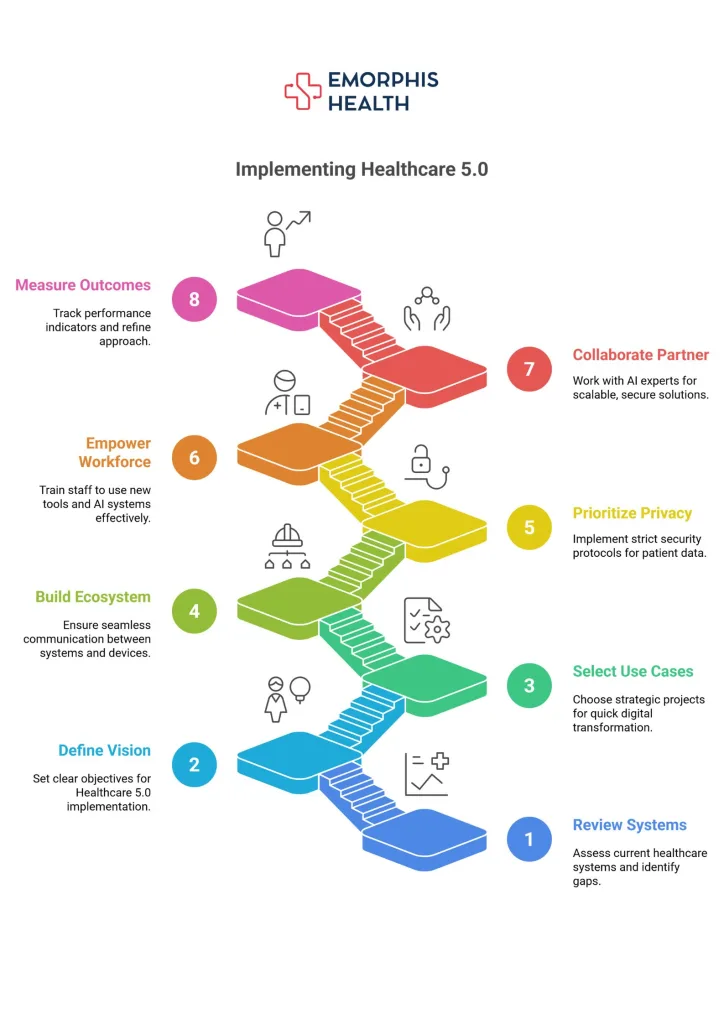

Implementing Healthcare 5.0 is a journey, not a one-time project. With a thoughtful approach and the right technology partners, you can begin transforming your healthcare operations into intelligent, responsive, and patient-centered ecosystems.
Future Outlook of Healthcare 5.0
Healthcare 5.0 is shaping the future of healthcare with a strong focus on intelligence, personalization, and real-time care. In the coming years, we can expect the following developments:
-
Fully Automated Hospitals
AI-powered systems will automate routine tasks, optimize workflows, and support decision-making. Smart hospitals will become more responsive, efficient, and patient-centered. -
Remote and Decentralized Care
Virtual care models will expand. Patients will receive care from home using wearable devices, telemedicine platforms, and connected health apps. Hospital walls will no longer limit healthcare. -
Precision Medicine and Genomics
Personalized treatments tailored to genetics, lifestyle, and environmental factors will become increasingly common. Healthcare 5.0 will support AI tools that match patients with the right therapies faster. -
Blockchain-Driven Data Ownership
Patients will control their health data and choose how it is shared across providers. Blockchain technology will support privacy, transparency, and traceability in health records. -
Cross-Industry Collaboration
New digital health solutions will come from the collaboration between healthcare providers, tech companies, insurers, pharma, and wellness brands. The result will be more integrated, value-based care ecosystems. -
Global Health Equity
AI-powered solutions will help underserved areas get access to diagnostics, telehealth, and education. Healthcare 5.0 can reduce the urban-rural healthcare gap using mobile and cloud-based systems. -
Regulatory Evolution
As technology evolves, regulatory bodies will adapt frameworks to support innovation while ensuring patient safety. Governments and agencies will support trusted, transparent AI deployment in healthcare.
Organizations that start building future-ready solutions today will be in the best position to lead the healthcare industry through this next wave of transformation. The journey to Healthcare 5.0 is just beginning.
Conclusion
Healthcare 5.0 is transforming the way care is delivered, managed, and experienced. It combines AI, IoT, robotics, cloud, and personalized medicine to create smarter, connected, and patient-first healthcare systems.
To stay ahead, healthcare providers, startups, and enterprises must begin their journey now. Start with a clear strategy, identify high-impact use cases, and work with trusted digital health and AI development partners.
If you are planning to build AI-powered healthcare applications or want to implement Healthcare 5.0 solutions, now is the time to act. Collaborate with experts who understand the healthcare domain and can help you build compliant, scalable, and intelligent systems.
Let us help you turn your Healthcare 5.0 vision into reality.

